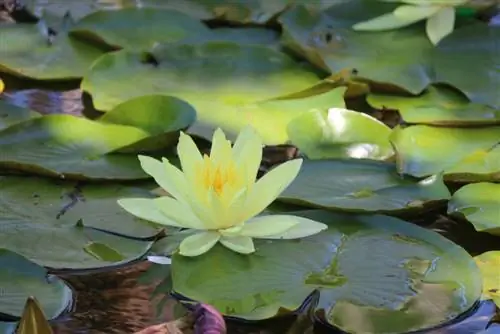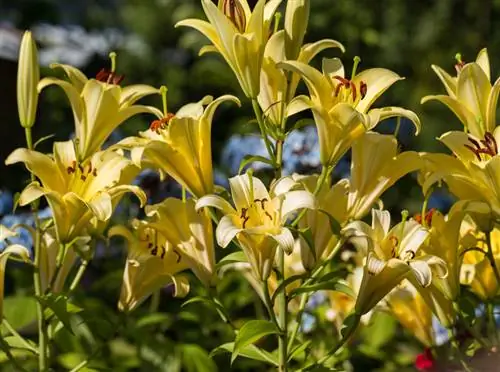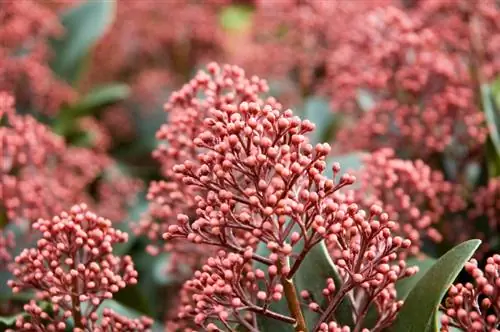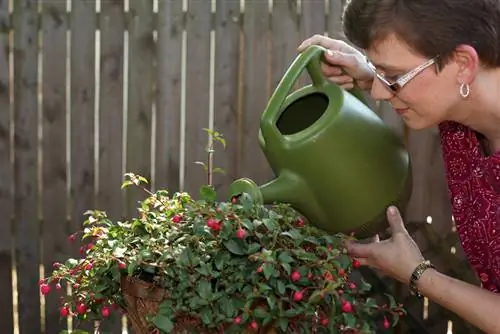- Author admin [email protected].
- Public 2023-12-16 16:46.
- Last modified 2025-01-23 11:22.
Water lilies need nutrients that encourage them to sprout leaves and make their flowers shine in the most beautiful colors. However, it must be fertilized in such a way that the fertilizer only specifically benefits the water lilies. We'll tell you below how this can work in the pond.
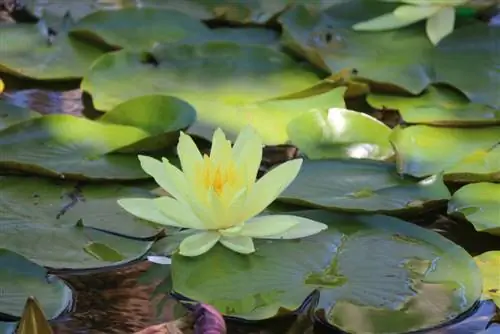
How to fertilize water lilies in the pond?
Water lilies in the pond should be fertilized with fertilizer balls or cones placed in the root area to prevent leaf growth and algae proliferation. Fertilizer is applied once a year in April or May.
Stay away from liquid fertilizer
A liquid fertilizer that makes sense for potted plants is less suitable for water lilies. Its nutrients would immediately dissolve in water and eventually spread throughout the pond. This has several disadvantages:
- Water lily can then absorb the nutrients through the leaves
- this leads to increased leaf growth
- especially if the fertilizer contains a lot of nitrogen
- the flower buds are covered and cannot develop
- nutrient-rich water also promotes algae proliferation
Fertilizer cones are more suitable
Special fertilizer cones (€8.00 on Amazon) for water lilies or for aquatic plants in general are placed in the root area of the water lily, where they gradually release their nutrients and are promptly absorbed by the roots of the plant.
Tip
Horn shavings can also be used as an organic long-term fertilizer. Mix them with water and let the mixture solidify into ice cubes. This makes it easier to put this fertilizer into the substrate of a water lily.
Optimum time for fertilizer application
With the start of the growing season in April or May at the latest, optimal care of the water lily also includes a good supply of nutrients. If repotting is necessary, the two can be connected together.
The fertilizer balls available on the market can release their nutrients evenly over 9 months. This means that one fertilization date per year is sufficient.
Be careful with the dosage
Even a long-term fertilizer can be overdosed, which will have a negative effect not only on the water lily, but on the entire water world. How many fertilizer balls are pressed into the water lily's substrate depends on its size. Follow the manufacturer's recommendation in this regard.
There are also high-consumptive water lily varieties and those that require fewer nutrients. The deeper a plant is, the fewer additional nutrients it needs. Finally, the nutrient saturation of the water also plays a role.
Identifying and compensating for nutrient deficiencies
If you observe your water lilies, you can easily see whether they are well supplied with nutrients based on visible changes. If necessary, additional fertilization must be carried out in a targeted manner.
- yellow leaves appear when there is little sunlight or iron deficiency
- web-like discoloration from the center of the leaf indicates a magnesium deficiency
- frayed leaves occur when there is a potassium deficiency

